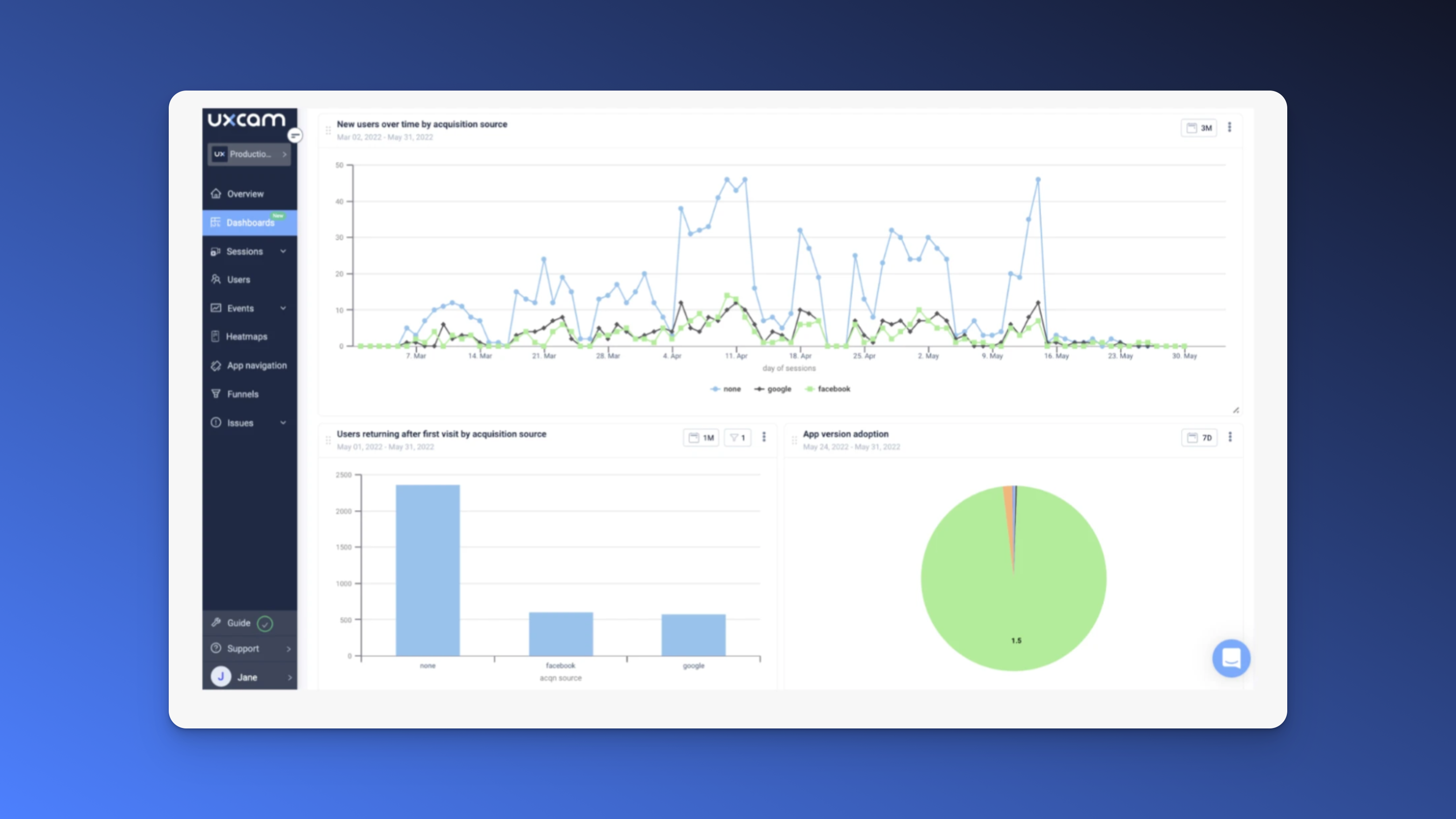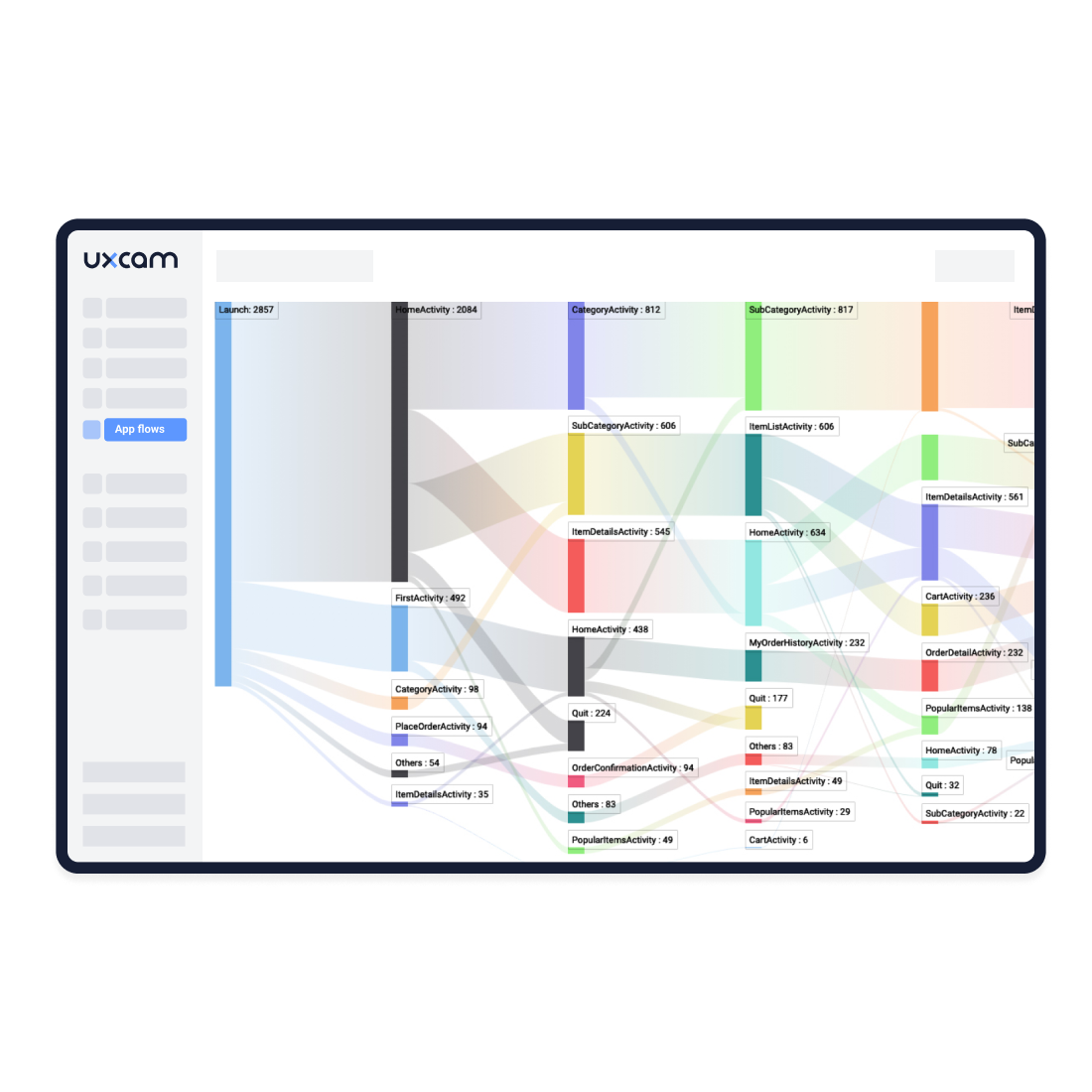Product Strategy Framework - 9 Steps to Create a Winning App
PUBLISHED
20 September, 2023

Growth Marketing Manager
One common challenge for product managers in developing mobile apps is the pull of reactive tasks, diverting their focus from strategic initiatives.
Remarkably, 52% of their time is consumed by unforeseen firefighting duties, with 22% of concerns being about this distraction. This statistic highlights the pressing issue—reactive tasks eat into proactive efforts.
This guide explores the product strategy framework—a compass amid reactive chaos. Additionally, we will delve into various tips and practices for designing an effective one.
What is a product strategy framework?
A product strategy framework serves as the guiding blueprint in the realm of mobile app development. It's the tool that ensures your team is on the right track, even amidst the chaos of reactive tasks.
The product strategy framework comprises three crucial components:
Product Mission: This is the guiding principle that defines the importance of your product.
Product Strategy: It is like a map that guides you towards success.
Product Execution: Once your compass and map are ready, it’s time to take action.
To ensure your team is working efficiently, use UXCam to strengthen your framework. UXCam provides valuable insights that guide you toward creating empathetic products that excel in a constantly changing environment. Plus, advanced analytics can help you determine what features to prioritize and how to improve user engagement.
Inspire Fitness used UXCam to clarify its product strategy.
The team used features like session recording, event analytics, issue analytics, and heatmaps to create a strategy that revolved around user needs. The results? A 460% increase in time spent in-app and an 181% increase in new user sign-ups.
Why is a product strategy framework important?
Provides clarity for your business
A clear business strategy is crucial for defining your product’s scope and making informed decisions. It benefits development, sales, and marketing teams by helping them understand your product's value and unique selling points, enabling effective customer communication.
Allows you to build your product roadmap
By visualizing your strategy in a clear and organized manner, you provide a roadmap that guides your team through each process step. This roadmap not only helps in setting priorities and defining timelines but also ensures that everyone is on the same page and understands their role in achieving the desired outcomes.
Helps you make more tactical decisions
By having a flexible framework in place, you can pivot and adjust to the changing dynamics, all while staying focused on your goals. This adaptability allows you to navigate through various challenges and seize new opportunities that arise along the way.
How to design a product strategy framework
Step 1 - Define your product vision
To begin, craft a product vision that radiates ambition and clarity. This statement encapsulates your product's purpose and value and resonates with your company's broader mission.
Here are some examples of real mobile apps’ product visions:
Spotify: To inspire human creativity by enabling a million creative artists to live off their art and billions of fans to enjoy and be inspired by it.
Instagram: To capture and share the world’s moments.
Duolingo: To make language learning accessible to everyone.
Uber: To ignite opportunity by setting the world in motion.
Netflix: To entertain the world with TV shows and movies across a wide variety of genres and languages.
Step 2 - Learn about your customer needs and how they’re evolving
The next step is to conduct thorough market research and gain a deep understanding of your target audience. This will enable you to identify their wants, needs, challenges, and what they are willing to pay for solutions.
UXCam empowers mobile app teams with granular insights, enabling them to develop empathic products. With its analytics capabilities, you can gain valuable information about real user behavior, allowing you to step into your customers’ shoes and understand their journey like never before.
Take JobNimbus, for example. In 2020, it struggled with app experience and had a high churn rate and low app store rating. They realized that many of their users were not tech-savvy and relied on traditional methods.
The product team used UXCam to rebuild its app. They tracked feature adoption and device model distribution metrics to make targeted improvements and ultimately improved the app store rating to 4.8 stars.
Step 3 - Create a clear product positioning statement
A product positioning statement is a guiding light for your product's identity and messaging. It distills your product's essence, conveying its value, target audience, and the market needs it fulfills. Designing this statement carefully creates a clear, impactful message that resonates with your customers.
A popular framework is:
For [target segment]
Who [statement of need or opportunity]
The [product name] is a [product category]
That [main benefit]
Unlike [main competitor]
Our product [statement of differentiation]
Putting all that together, a fitness app product team might write:
“For busy professionals and athletes who are looking for an efficient way to track their workout performance, the PerformX Fitness App is a mobile fitness tracker that makes it easy to track progress and access personalized advice. Unlike ProFitness, our product uses AI-driven insights to give users tailored tips and strategies.”
Step 4 - Research similar models in the market
Examining successful and unsuccessful cases within analogous markets gives you a comprehensive understanding of effective tactics and potential pitfalls.
You can dissect their strategies, unique value propositions, and marketing approaches by analyzing successful products. Conversely, investigating unsuccessful products reveals valuable lessons about what to avoid.
Duolingo is a great example. The language-learning app uses a total of eight different gamification techniques to make the app as “sticky” as possible. Features like levels, leaderboards, and rewards create a self-driven cycle that encourages users to keep coming back.
Another language-learning app could learn a thing or two by looking into Duolingo’s strategy.
Step 5 - Prepare for potential changes in your market
Anticipating and adapting to market changes is essential for maintaining a competitive edge. Similar to a ship navigating changing waters, your strategy must evolve to stay ahead of evolving trends.
Take Costa Coffee, for example.
The company saw the success of mobile loyalty programs like Starbucks and wanted to get involved. Their mobile app strategy evolved and adapted to this new direction and with the help of UXCam’s analytics tools, the product team was able to develop a mobile app that users loved.
Step 6 - Develop KPIs for your strategy
Developing measurable key performance indicators (KPIs) acts as the compass that guides your journey and quantifies your progress. These KPIs serve as the benchmarks against which you measure the success of your strategy's execution.

Establishing KPIs might involve measuring engagement metrics, such as the frequency and duration of app usage. Adoption rates could be another vital KPI, indicating how effectively users embrace your app. Growth objectives could encompass the increase in user registrations or the expansion of active users over time.
Step 7 - Build a product roadmap
Your product roadmap serves as a comprehensive plan to effectively manage tasks and meet deadlines. It is essential that it is in line with and derived from your product strategy.
Start by outlining the key deliverables and initiatives that need to be completed for the strategy's successful implementation. Then break down each initiative into individual goals and tasks, assigning estimated delivery dates.
Step 8 - Execute your strategy
The execution phase is the stage where your vision starts to take shape, where strategic blueprints transform into tangible outcomes. This transformation requires meticulous planning and deliberate action, converting your strategic steps into a roadmap of actionable tasks that guide you towards your goals.
As your strategy unfolds, it's time to create prototypes—early-stage versions that give life to your concepts. These prototypes aren't just products but invitations for potential users to engage, experience, and provide feedback. Their insights become a compass that guides you, helping you refine your approach based on real-world interactions.
Step 9 - Measure your progress
Regular progress measurement necessitates thoroughly examining engagement metrics, adoption rates, and pertinent KPIs. These metrics function as quantifiable markers, reflecting the strategy's evolution and its alignment with intended outcomes.
Quantitative analysis is important, but it's not the whole story. The development team's input is crucial to truly understanding the context behind the data. Their hands-on involvement gives them unique insights into both the successes and challenges of implementation, offering valuable perspectives that go beyond the numbers.
UXCam combines qualitative and quantitative mobile app data to give mobile product teams a holistic understanding of their product. Tools like session replay, heatmaps, event logs, and screen flows help developers empathize with users and build product strategy frameworks that support their needs.
Best practices when creating a product strategy framework
1. Set essential distinguishing factors
When developing a product strategy framework, it's crucial to identify key differentiators that clearly distinguish your product from competitors. This unique value proposition should resonate with your target audience and effectively address their pain points.
UXCam can help you discover and establish the important factors that set your app apart by offering valuable insights into how users engage with it. With features like session replays, heatmaps, and journey analysis, you can see firsthand what pleases and frustrates your customers. This knowledge is invaluable in identifying areas where your app succeeds and areas where it could improve, allowing you to prioritize developing features that truly make your product stand out from competitors.
2. Analyze user behavior
Discover valuable insights into user interaction and behavior with our advanced analytics tools. Gain a deeper understanding of user behavior patterns, navigation paths, and motivations through features like session recordings and heat maps.

With UXCam, you can step into your customers’ shoes and truly empathize with their journey. Uncover real user behavior data, such as screen time, rage tap rate, app quit rate, and crash rate, to identify problematic areas and develop more user-friendly and empathetic products.
3. Inspire long-term development and innovation
Products have a consistent life cycle that repeats. Although your latest product may grab the market's attention at first, it's bound to face competition from newer and more innovative products eventually. These advancements may catch consumers' eyes momentarily before being replaced by the next big thing. To remain relevant, it's essential to continuously innovate and adjust to changing market needs.
Conclusion
Crafting a successful mobile app requires more than just coding and design—it demands a strategic approach. A product strategy framework provides the roadmap to navigate this complex landscape. By aligning your team, understanding user behavior, and adapting to market changes, you can create products that truly resonate with your audience.
With UXCam's insights, you can step into users' shoes and develop empathic products that stand out. Elevate your mobile app journey by integrating a well-defined strategy.
Start your free trial with UXCam.
You might also be interested in these;
5 examples of product strategy and how to create one
8 Important product management templates for mobile app teams
Product design guide (2023) - How to differentiate your app
Product management and user experience - How to collaborate effectively
AUTHOR

Tope Longe
Growth Marketing Manager
Ardent technophile exploring the world of mobile app product management at UXCam.
What’s UXCam?
Related articles
Product best practices
Como Encontrar Usuários Ativos De Um Aplicativo
Descubra estratégias comprovadas para identificar e engajar usuários ativos do seu app, aumentar a retenção, impulsionar o crescimento e maximizar o sucesso do seu...

Tope Longe
Growth Marketing Manager
Product best practices
Product Performance Analysis - A 7-Step Playbook with UXCam
Learn how to use product performance analysis to improve UX, boost retention, and drive growth with actionable steps and...

Tope Longe
Growth Marketing Manager
Product best practices
How to Increase Mobile App Engagement (10 Key Strategies)
Discover the top strategies for increasing mobile app engagement and user retention. From push notifications to app gamification, our expert tips will help you boost...

Tope Longe
Growth Marketing Manager